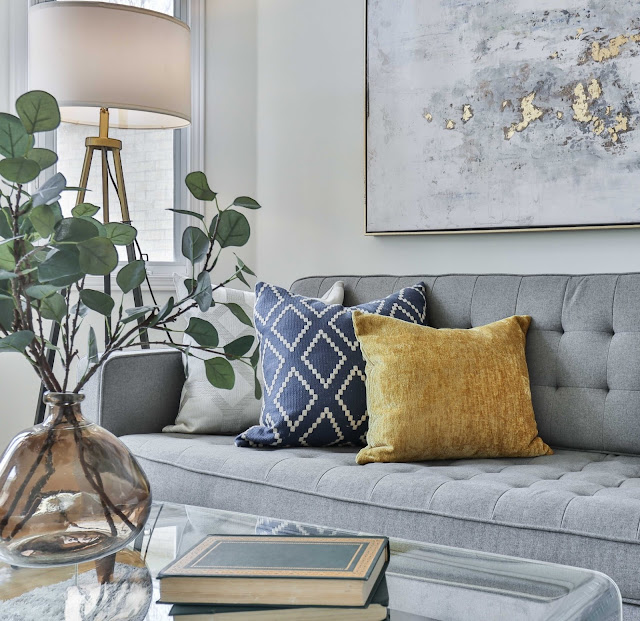Try This Easy 10-Minute Declutter Method in Any Room
If you've wanted to declutter, but feel overwhelmed by all of your stuff and just can't seem to find the time, this 10-minute decluttering method will transform your life.
The best thing about it is its name, because it's exactly what it says it is. You'll want to try this super-quick method, because decluttering is often easier when you don't overthink or second-guess everything. All you need is 10 minutes of your time several days a week.
You can do this! Ten minutes is a couple of commercial breaks. You can grab a shower or get dressed in ten minutes. You likely spend way more than 10 minutes a day on social media.
Experts recommend that you do this five days a week, but start with what you can manage. Don't be surprised if the 10-minute deadline helps you work faster and smarter, and gets you excited about doing even more.
4 steps to a quick declutter
1. Get a timer.
Timers are great motivators. You can use the timer on your phone or buy a separate, easier-to-see timer.*
* This blog is reader-supported. If you buy through my links, I may earn a small commission.
2. Decide to donate.
This is worth thinking about before you start your 10-minute declutter. You don't want to wind up with bags of stuff in your garage or attic "just for now" because you haven't decided where they'll go or whether you want to take the time and effort to sell them. (Use your time for decluttering!)
You'll need bags for trash and recycling, but plan to donate useable items. That doesn't mean you need to keep them because "they might be useful someday." They are useful – but you're not using them.
3. Schedule it.
Most people need this extra step to make it happen, because a "due date" helps you stay focused. You could pick a weekend or holiday to start with, or an evening when you're going to be home.
Anchor your 10-minute slot to something else you know you'll be doing, such as "the beginning of half-time in the game," "right after breakfast on Saturday," or "as soon as we've cleaned up after dinner and before my favorite TV program."
4. Choose where to start.
Marie Kondo suggests you start with your wardrobe, and that might be a good idea. It can be fairly easy to declutter things that don't fit or look good on you, or that remind you of sad or uncomfortable situations. Try choosing a neutral base color (your favorite black, brown, gray, navy, tan, or ivory/white) and two or three accent colors that coordinate with your base and with each other. Define your ideals for colors, cuts, and patterns. What would happen if you boxed up everything else?
You could also begin in the kitchen, where almost all of us have duplicate dishes, glassware, utensils, and gadgets. There are those unused serving pieces and small appliances shoved in the back of a cupboard. There are dusty cookbooks and dozens of mugs.
Another possible starting place is the bathroom, where you undoubtedly have products you tried and didn't like, excess makeup, expired medications, and towels that should be downgraded to pet duty so you can finally use the ones you've been keeping for "good."
How about starting with your bookshelves? You probably own some beach reads or book club selections you'll never read again, some titles by your favorite prolific author that aren't his best, or some classics you've been meaning to read since college a decade ago. See if you can remove and donate at least 10%-20% of your tomes. What's left will be a better representation of who you are now.
Another option is to box up half of your artwork and knickknacks and put them away for a month or two (date the box). If you think of something you really miss during that "on hold" period, make a note of it. When the opening date rolls around, go ahead and retrieve the things on your list, if you still want to. As for the other items, were you overjoyed to see them again? Or did you find that you had disconnected from them? Maybe you like your rooms with less visual noise. Go ahead and donate all of those "meh" items.
If you want to start smaller, choose one drawer or one closet.
- Clear out unused art or office supplies. Your child's school, the local senior center, Habitat for Humanity ReStores, or the Salvation Army may accept donations.
- Remove extraneous coats and blankets. Check with your local homeless shelter about donations.
- Consider removing half of your jewelry. I donated mine to a local charity shop.
- Declutter unused sports equipment. Your school, local sports leagues, or community centers might be happy to take these items, or you could give them away on Facebook Marketplace.
- Delete the junk drawer. Find permanent homes for things you really need, such as viable lightbulbs and batteries, notepads, working pens, and the like. Properly recycle dead lightbulbs and batteries, cords for equipment you no longer own, mystery keys, etc. Trash the rest.
Ready to do some decluttering now? You know you have spaces that could do with some fast and ruthless pruning. Simply set your timer for 10 minutes and go – and don't be surprised if you gain confidence and motivation to do more!
10 minutes x 5 days/week x 6 months = more than 21 hours
I've written a pocket-size A to Z guide to decluttering that breaks the process into manageable tasks. It's the road map you've needed – delivered in bite-size pieces to help you achieve the larger, cleaner, more organized home you're longing for.
Look for Decluttering: The Simple Guide from A to Z on Amazon.
Would you like to support my work? Buy me a coffee. Thanks!







Comments
Post a Comment